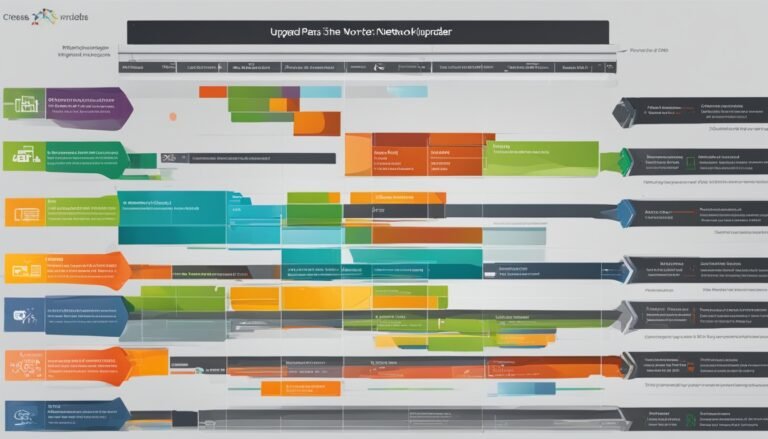In the fast-changing world of medical tech, THY Precision iso standards for medical devices and iso 13485 meaning are key. They help create new solutions like 3D-printed implants. It’s vital to know how these standards affect the safety and quality of medical devices.
Imagine making a custom implant for a patient’s body, lowering the chance of problems and bettering surgery results. This dream is now possible with 3D printing. But, making sure this tech meets iso standards for medical devices and iso 13485 meaning is crucial. How can makers and healthcare teams make sure they’re meeting top safety and care levels?
Key Takeaways
- The iso standards for medical devices and iso 13485 meaning are key for quality, safety, and following the rules for medical devices, like 3D-printed implants.
- It’s important to understand how these standards affect making, testing, and checking medical devices for those making them and healthcare teams.
- It’s key to deal with new rules and challenges of 3D-printed implants for successful use of this new tech.
- The goal is to use 3D printing’s benefits while keeping patient safety and care at the highest level.
- Working together between industry, rule-makers, and healthcare teams is needed to smoothly add iso standards for medical devices and iso 13485 meaning into 3D-printed medical devices.
The Evolution of 3D Printing in Medical Applications
Since 1991, Radiology and Plastic Surgery have shared their findings on stereolithographic (SLA) technology. This tech helps make quick 3D models of anatomy. Over the years, 3D printing in medicine has grown, especially with devices like iso standards for medical devices and iso 13485 meaning implants. Other areas like surgical guides, prosthetics, and models of anatomy have also seen growth.
Key Milestones in the Adoption of 3D Printing for Medical Devices
3D printing in medicine has hit many important milestones:
- In the early 1990s, the first 3D-printed anatomical models were used for surgical planning and education.
- By the early 2000s, 3D-printed medical devices, such as hearing aids and dental prosthetics, began to emerge.
- In the 2010s, 3D-printed patient-specific implants and surgical guides became more common, improving surgical outcomes and patient satisfaction.
- Today, 3D printing is used for a wide range of medical applications, from medical device quality management systems to regulatory compliance for medical devices and FDA guidelines for medical devices.
But, there are hurdles to wider use of 3D printing in medicine. These include insurance coverage, getting approval as a medical device, and managing risk management in medical devices and design controls for medical devices. To help, many guidelines and standards are being set. These are for validation of medical devices and supplier evaluation for medical devices in 3D printing.
“3D printing has the potential to revolutionize the medical industry, from personalized implants to custom prosthetics and beyond. As the technology continues to evolve, we can expect to see more widespread adoption and innovative applications in the years to come.”
The use of 3D printing in medicine is still growing, but its potential is huge. As corrective and preventive actions (capa) in medical devices and other rules change, we’ll see more use of 3D printing. This will lead to more personalized, efficient, and cost-effective healthcare solutions.
iso standards for medical devices,iso 13485 meaning
The medical device industry is always changing. Knowing about ISO standards for medical devices and the ISO 13485 meaning is key. These standards help make sure medical devices, like 3D-printed implants, are safe and meet the rules.
The ISO standards for medical devices give a detailed plan for making and checking medical products. The ISO 13485 meaning is about medical device quality management systems. It tells companies how to show they can make products that meet customer and law needs.
| ISO Standard | Description |
|---|---|
| ISO 13485 | Specifies requirements for a quality management system for the design and manufacture of medical devices to demonstrate the ability to provide medical devices and related services that consistently meet customer and applicable regulatory requirements. |
| ISO 14971 | Specifies a process for a manufacturer to identify the hazards associated with medical devices, including 3D-printed implants, to estimate and evaluate the associated risks, to control these risks, and to monitor the effectiveness of the controls. |
| ISO 62304 | Specifies life cycle requirements for the design controls and development of medical device software, ensuring the software’s validation and risk management. |
These ISO standards for medical devices and the ISO 13485 meaning are key for making sure medical devices, like 3D-printed implants, follow the rules. By following these standards, companies show they care about quality, safety, and managing risks in the medical device field.

THY Precision is a top maker of medical devices. They follow the ISO standards for medical devices and the ISO 13485 meaning in their work. This focus on quality management systems and regulatory compliance lets them make advanced 3D-printed implants. These implants meet the FDA guidelines for medical devices and risk management needs.
Regulatory Landscape and Challenges
The medical device industry is changing fast, especially with new 3D-printed implants. ISO standards for medical devices and ISO 13485 meaning are key to making sure these products are safe and meet quality standards.
THY Precision and other device makers face big challenges with changing rules from groups like the FDA. They must follow FDA guidelines for medical devices. This means they need to manage risks well, have strong design controls, and validate their devices carefully.
Addressing Regulatory Challenges
THY Precision has a plan to deal with these rules:
- They keep up with the latest ISO standards for medical devices and ISO 13485 meaning. This makes sure their medical device quality management systems are top-notch.
- They invest in strong design controls for medical devices and validation of medical devices. This shows their 3D-printed implants are safe and work well.
- They have detailed risk management in medical devices plans. These help spot and fix risks at every stage of the product’s life.
- They work closely with regulators and join in on industry talks. This helps them stay on top of new FDA guidelines for medical devices.
- They check their supplier evaluation for medical devices and corrective and preventive actions (capa) in medical devices closely. This keeps their quality and compliance high.
By tackling regulatory challenges head-on and following ISO standards for medical devices and ISO 13485 meaning, THY Precision is ready to bring innovative, safe, and compliant devices to patients.

Applications and Case Studies
The medical device world has changed a lot thanks to 3D printing. Now, we can make custom prosthetics and implants just for each patient. At THY Precision, we use iso standards for medical devices to make advanced 3D-printed solutions for our clients.
3D printing has made a big difference in calvarial reconstruction. Patients with certain scalp issues or problems with cerebrospinal fluid can get implants that help protect their brain and look natural. We use medical images, CAD software, and top 3D printing to make implants that fit each patient perfectly. This improves how well they work and how they look.
| Application | Benefits |
|---|---|
| Implantable Medical Devices |
|
| Surgical Guide Systems |
|
| 3D Anatomical Models |
|
At THY Precision, we always aim to lead in using iso standards for medical devices and iso 13485. We make sure our 3D-printed solutions are top quality, safe, and follow all rules. Our knowledge in managing medical device quality, managing risks, and controlling designs lets us make products that really help patients.
“3D printing has opened up a world of possibilities in the medical field, allowing us to create personalized solutions that improve patient outcomes and enhance the overall healthcare experience.”
As we keep exploring what 3D printing can do in medicine, THY Precision is committed to the highest standards of safety and following the rules. By using iso standards for medical devices and iso 13485, we’re helping shape the future of healthcare with personalized 3D-printed implants.
Conclusion
The medical device industry has changed a lot with 3D printing technology. This new way helps make devices that fit each patient’s needs. It follows the latest iso standards for medical devices and iso 13485 meaning.
THY Precision leads in this change. They mix international standards and rules into their work. This makes sure their 3D-printed devices are safe and work well for each patient.
Working together is key to using 3D printing in medical devices more. Industry leaders, rule makers, and health experts must work together. They need to keep up with new rules, manage risks, and check their processes. THY Precision and others are making a future where custom, high-quality devices are common.






